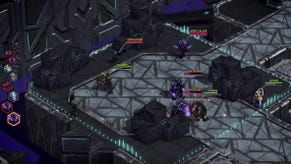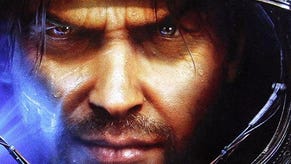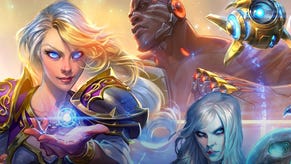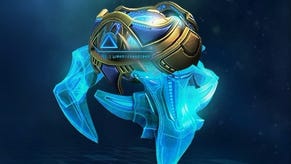StarCraft II: Wings of Liberty
Multiplayer beta.
In most any multiplayer RTS, victory relies on what you have in your hand - the structures and units you've built. In a great many of them, though, what you do with that hand is just as crucial. StarCraft II, if you're going to be playing it relatively casually, is different in that success depends primarily on what you have in your hand, how it's tailored to what the enemy has in their hand, and not so much on what you actually do with it. At least until you're playing at a level where both you and your opponent knows exactly what to build at all times, in which case constant micro-movement of your largely deadlocked armies is a whole new, even harder discipline to learn.
There are three factions - the space mariney Terran, the Aliensy Zerg and the techno-alien Protoss - and all three are totally distinct. This is asymmetrical strategy, rather than every side having roughly equivalent units.
Once you've semi-mastered a race, you're probably going to stick with it, forever. However, you must have absolute understanding of the other two factions, so that when your spies or scouts spot their first unit stride out of a factory, you know exactly what path up the tech tree they're taking, and exactly what to build to counter it.
It's ultra-chess, in its way. The actual fights are almost perfunctory, usually foregone conclusions. Player A has built that, which means Player B is absolutely screwed no matter how many of those he's managed to build. While learning the choke points and open spaces of the map is also key - you can't afford to waste any time wandering aimlessly, or leaving ground troops stuck at the bottom of a cliff overlooked by a phalanx of enemies - information is the real power here. If you don't know what the enemy is building, you can't respond to it. Biff. Dead.
On top of that, you need to be fast. The guys who are frighteningly good at StarCraft and its sequel are essentially superhumans, able to move and click that mouse at lightning speed. The pro players can manage over 400 actions per minute - selecting units, ordering them somewhere, building something, upgrading something else, activating a special ability, selecting, deselecting, selecting, deselecting...
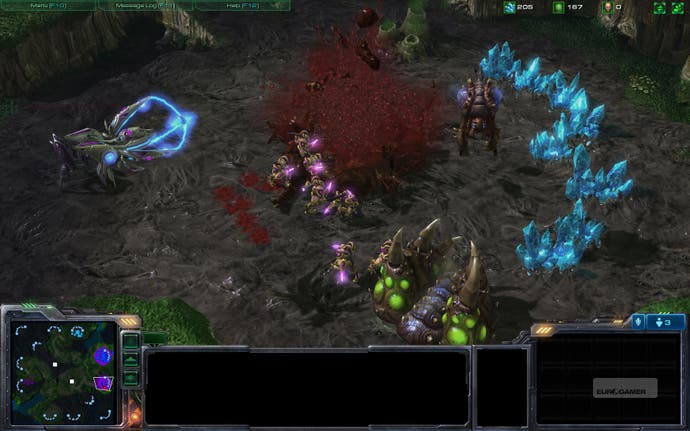
You won't ever need to be that good. But you'll certainly need to manage much better than the less than 100-odd actions per minute you'll likely muster in your first few matches.
Achieving this is as much about will as it is about practice. One recent match saw most of my Protoss factories wiped out by a Terran assault, but his lack of invisible bastard-spotting Ghosts meant his army of robots and tanks was ultimately destroyed by a couple of permanently-stealthed Dark Templars I'd left lurking near my HQ.
Half my base was down, but his entire his army was down. Luck, not judgement - but a vital lesson that, next time, I should use a scout to identify whether my opponent was building any stealth-detecting units (Ghosts, in the Terran's case). If not, I should go full invisible and not bother with aircraft and tanks and whatnot. He'd have no chance. I'd learned something: the sense of understanding was so powerful I could taste it. It meant I could climb slightly further up that great pyramid of skill.

